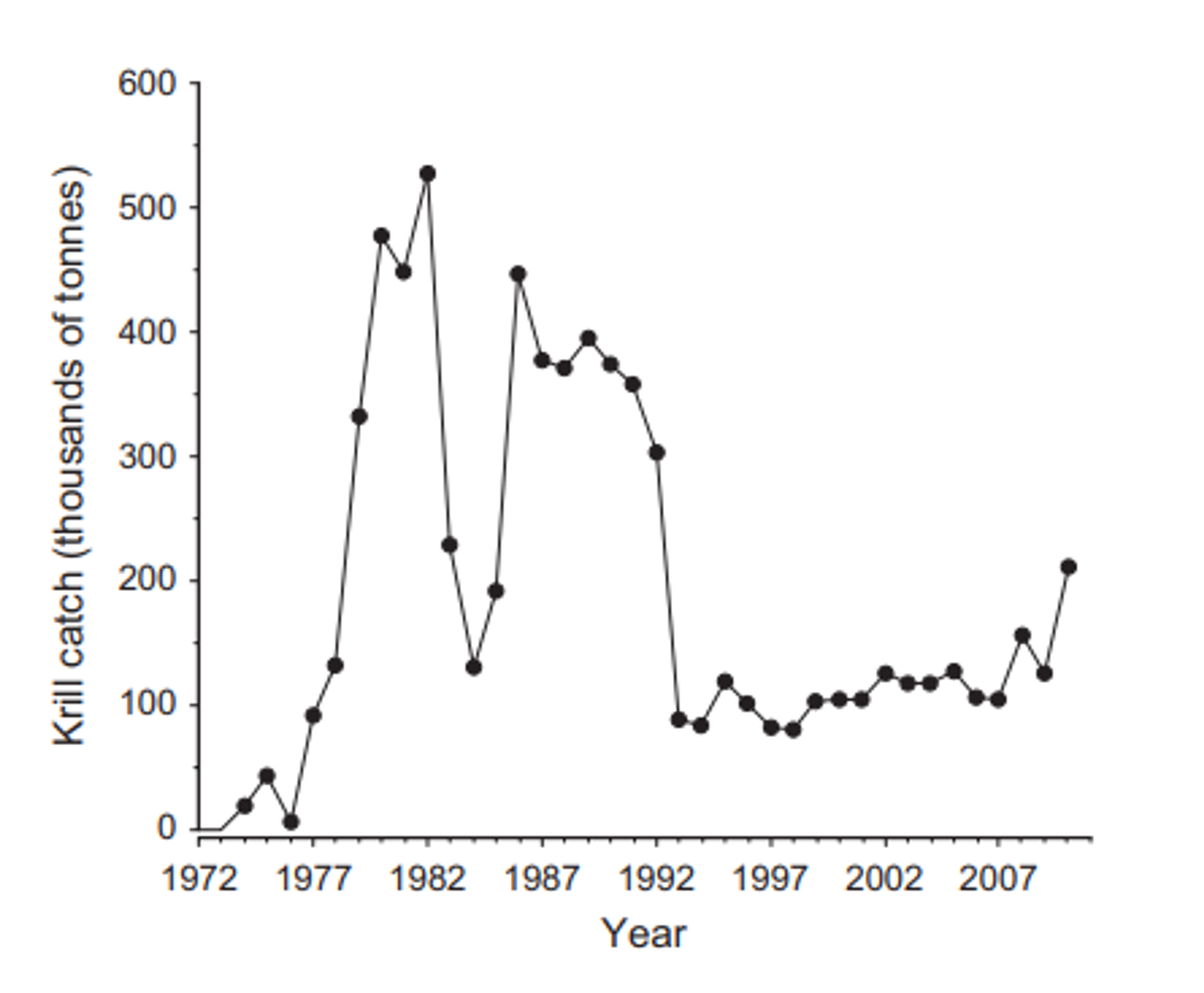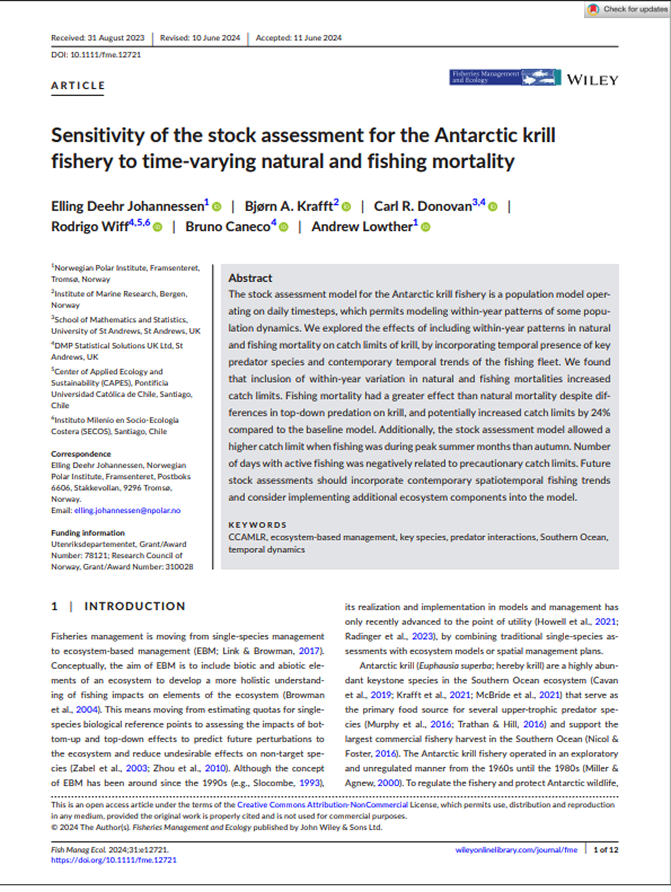Biomass
Fisheries management
Antarctic ecosystem
Krill (Euphausia superba)
The fishery for Antarctic krill – recent developments
Summary
The Southern Ocean krill fishery is undergoing major changes as new countries join the industry and technology improves. Historically, the fishery has been limited by costs rather than krill availability - current catches of 210,000 tonnes are far below the precautionary limit of 8.6 million tonnes set by scientists. Recent developments are driving expansion. New continuous pumping methods make harvesting more efficient, while demand is growing for krill in fish farming and medicine. Countries like Norway and China have entered the fishery alongside traditional participants. CCAMLR, the management body overseeing Antarctic waters, is adapting by requiring fishing notifications, maintaining precautionary catch limits, and placing observers on vessels. Meanwhile, environmental changes - especially reduced sea ice - are lengthening fishing seasons and impacting krill populations themselves. The research emphasizes that before any major expansion occurs, managers need to divide the large catch limits into smaller regional quotas and establish better monitoring of the Antarctic ecosystem. This precautionary approach is essential given krill's critical role as food for whales, seals, and penguins throughout the Southern Ocean.

1
The annual catches of Antarctic krill.Key Findings
1
Current krill catch (210,000 tonnes) is less than 1/40th of the precautionary catch limit (8.6 million tonnes) 2
New continuous pumping technology has dramatically increased catch efficiency (up to 800 tonnes/day) 3
Growing market demand for krill products in aquaculture feeds and pharmaceutical/nutraceutical sectors 4
Environmental changes (reduced sea ice) are extending fishing seasons and altering krill habitats 5
Increased spatial management measures are needed before substantial expansion of the fishery 

